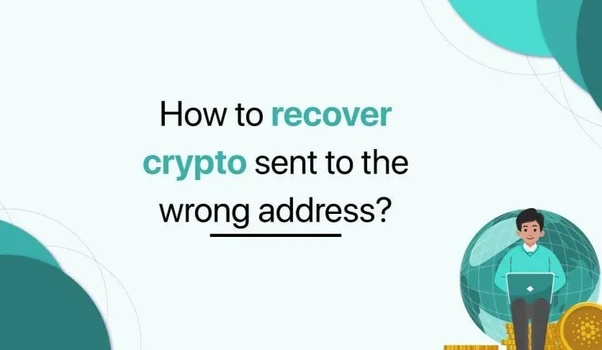What Happens if I Send Crypto to the Wrong Address?

Let’s talk about every crypto investor’s worst nightmare! Sending you crypto to the wrong address!
The decentralized allure of cryptocurrencies grants users unparalleled control over their assets, eliminating the need for intermediaries. However, with great power comes responsibility, and the complex world of crypto transactions is not without its pitfalls, especially when it comes to sending assets to the wrong address.
Can You Recover Crypto Sent to the Wrong Address?
In the realm of cryptocurrencies, transactions are often deemed irreversible, constituting a finality that sets them apart. Yet, in the case of an inadvertent transfer to an active address, hope may not be entirely lost. Enter the possibility of locating the wallet owner and initiating a negotiation for the return of your digital funds.
Navigating the Unforgiving Terrain of Crypto
Given the intricate nature of crypto transactions and addresses, errors can creep in, leading to cases of misplaced transfers. Whether it’s sending assets to an incorrect address, network, or the wrong contract address, the consequences can be severe. While many instances result in permanent asset loss, there are avenues for users to explore in the pursuit of recovering their crypto holdings.
Types of Wallets You Could have Sent Your Crypto to
In simple terms, sending your crypto to the wrong address spells irretrievable loss for you. Your assets slip from your custody, failing to reach the intended recipient. The scenarios vary when crypto takes an unintended route:
- Burn Address or Dead Wallet: With no private keys, burn addresses offer no avenue for recovery. Dead wallets, inactive and inaccessible, only hold a glimmer of hope if the private key holder regains control, an unlikely scenario.
- Nonexistent Address: If the address exists within the blockchain’s structure, even if uncreated, theoretically, anyone with the address could access the funds. This rarity is countered by the vast number of possible address combinations.
- Active Wallet: Here lies the slim chance of recovery. Identifying and contacting the wallet owner, especially in the case of an exchange account, may open a door to reclaiming your assets.
Taking Action: Recovering Crypto Sent to the Wrong Address
For those grappling with the aftermath of a misdirected crypto transfer, recovery hangs in the balance. If the address is active, options emerge:
- Exchange Support: Some centralized exchanges extend asset recovery services, providing a lifeline for those who erred in transfers to their wallets.
- Direct Contact: Initiating communication with the wallet owner, if known, presents an avenue for negotiation. In cases of uncertainty, tracing the recipient’s transactions may unveil clues, albeit recovery hinges on the owner’s willingness.
What if Crypto Goes to the Wrong Blockchain?
Blockchain’s inherent structure dictates that a transfer can only proceed if the wallet address aligns with the blockchain’s structure. This safeguard prevents accidental transfers to unrelated blockchain networks. However, nuances exist, especially in networks with similar structures. Instances of sending assets to a non-EVM network with a parallel wallet structure may render the asset unrecoverable, emphasizing the need for precision.
Rescue Mission: Recovering Crypto Sent to the Wrong Network
In scenarios where assets are sent to the right address but the wrong network, hope persists. Ethereum investors, for instance, can recover assets sent through the wrong network by switching to the correct one. Versatility in wallet integration or exportation to a compatible wallet ensures accessibility to the misplaced assets.
Preventing the Unthinkable: Tips to Avoid Sending Crypto Astray
While the irreversible nature of crypto transactions adds a layer of caution, proactive measures can mitigate risks:
- Copy and Paste Addresses: Avoid typographical errors by copying and pasting addresses. This not only saves time but also reduces the likelihood of mistakes.
- Scan QR Codes: Harness the scan feature to automatically input wallet addresses, with a vigilant verification of details before confirming transactions.
- Double-checking: Verify details at every step, ensuring alignment with the recipient’s information, especially on exchanges.
- Address Book Usage: Leverage wallet features that allow saving frequently used addresses. This facilitates error-free reuse, with the added advantage of network specification.
- Domain Address Requests: Simplify complex wallet addresses with naming services like Ethereum Name Service (ENS), requesting domain addresses when available.
Conclusion
The decentralized ethos of blockchain bestows autonomy upon non-custodial wallet users, accompanied by the responsibility for safeguarding their assets. Lengthy wallet addresses and the non-universality of cryptocurrencies compound the recovery challenge.
While potential recovery methods exist, prevention remains the ultimate strategy. Diligent verification, reliance on reputable recovery services, and a proactive approach are your best allies in the crypto recovery journey.
In the unpredictable world of crypto, prevention truly is the key to preserving your digital wealth.

